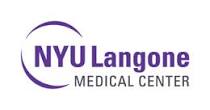Left Versus Right Radial Artery and Radiation Exposure in Patients With Predictors of Trans-radial Failure
| Status: | Completed |
|---|---|
| Conditions: | Peripheral Vascular Disease, Cardiology |
| Therapuetic Areas: | Cardiology / Vascular Diseases |
| Healthy: | No |
| Age Range: | 18 - Any |
| Updated: | 4/21/2016 |
| Start Date: | August 2012 |
Effect of Left Versus Right Radial Artery Access on Radiation Exposure in Patients With Predictors of Potential Trans-radial Access Failure
The aim of this study is to measure radiation exposure during coronary angiography (CA) with
a trans-radial approach (TRA), specifically comparing access via the left versus right
radial artery in patients with suggested clinical predictors of TRA failure/difficult. These
predictors include age >70, female gender, height <64 inches, and history of
hypertension.The study also aims to determine difficulties encountered during left or right
radial access in this specific patient population. A secondary aim is to compare the results
of enrolled patients with a registry of patients where femoral access was obtained.
Currently more than 1 million percutaneous coronary interventions (PCI) are performed in the
United States annually. There is a growing trend to perform procedures utilizing the TRA due
to recent data demonstrating decreased bleeding and access-site complications compared to
the femoral approach. However, the TRA approach is also know to be associated with greater
radiation exposure compared to the femoral approach. Furthermore, the TRA to catheterization
may be difficult in certain populations because of anatomic considerations. Though
traditionally completed via canalization of the right radial artery (RRA) due to feasibility
with room setup, left radial artery (LRA) access may be superior due to the shorter distance
needed to reach the ascending aorta and bypassing the tortuosity of the right subclavian
artery. Given the benefits of the TRA, it is important to determine how left versus right
radial artery access affects parameters of radiation exposure in addition to procedural
difficulty.
This study will be a prospective, randomized study of patients with suggested predictors of
TRA failure/difficulty referred for coronary angiography. Patients referred for coronary
angiography using the trans-radial approach will be randomly assigned to obtain arterial
access via the right or left radial artery. A registry of patients referred for coronary
angiography using the trans-femoral approach will be compiled. The primary outcome measure
will be radiation exposure as measured by dose area product output from the coronary
angiography system. Secondary measures will include the total fluoroscopy time, total dose
of radiation, number of catheters used, and incidence of subclavian tortuosity. In addition,
procedural complications and success rates will also be evaluated.
a trans-radial approach (TRA), specifically comparing access via the left versus right
radial artery in patients with suggested clinical predictors of TRA failure/difficult. These
predictors include age >70, female gender, height <64 inches, and history of
hypertension.The study also aims to determine difficulties encountered during left or right
radial access in this specific patient population. A secondary aim is to compare the results
of enrolled patients with a registry of patients where femoral access was obtained.
Currently more than 1 million percutaneous coronary interventions (PCI) are performed in the
United States annually. There is a growing trend to perform procedures utilizing the TRA due
to recent data demonstrating decreased bleeding and access-site complications compared to
the femoral approach. However, the TRA approach is also know to be associated with greater
radiation exposure compared to the femoral approach. Furthermore, the TRA to catheterization
may be difficult in certain populations because of anatomic considerations. Though
traditionally completed via canalization of the right radial artery (RRA) due to feasibility
with room setup, left radial artery (LRA) access may be superior due to the shorter distance
needed to reach the ascending aorta and bypassing the tortuosity of the right subclavian
artery. Given the benefits of the TRA, it is important to determine how left versus right
radial artery access affects parameters of radiation exposure in addition to procedural
difficulty.
This study will be a prospective, randomized study of patients with suggested predictors of
TRA failure/difficulty referred for coronary angiography. Patients referred for coronary
angiography using the trans-radial approach will be randomly assigned to obtain arterial
access via the right or left radial artery. A registry of patients referred for coronary
angiography using the trans-femoral approach will be compiled. The primary outcome measure
will be radiation exposure as measured by dose area product output from the coronary
angiography system. Secondary measures will include the total fluoroscopy time, total dose
of radiation, number of catheters used, and incidence of subclavian tortuosity. In addition,
procedural complications and success rates will also be evaluated.
Inclusion Criteria:
Patients referred for cardiac catheterization procedure with 3 out of the following 4
characteristics: age ≥70 years, female gender, hypertensive, and ≤64 inches in height.
Exclusion Criteria:
Patients will be excluded if they 1) underwent prior CABG with utilization of an internal
mammary artery, 2) have an abnormal Allen test, 3) require emergency cardiac
catheterization, 4) are planned to undergo a staged PCI procedure, 5) do not consent or
are unable to give consent, or 6) are participating in another competing study.
We found this trial at
1
site
New York University Langone Medical Center NYU NYU Langone Medical Center, a world-class, patient-centered, integrated,...
Click here to add this to my saved trials
